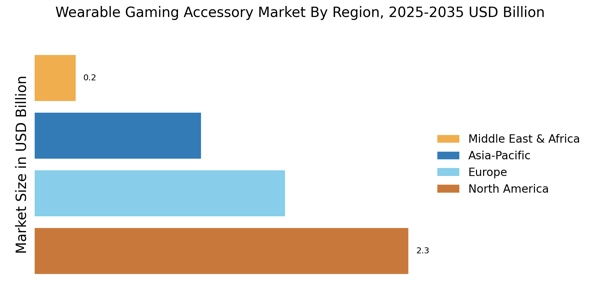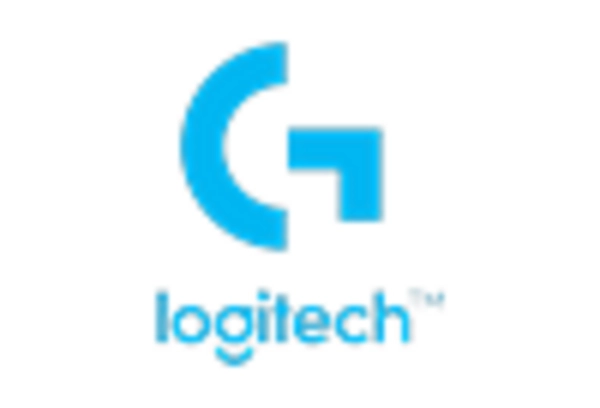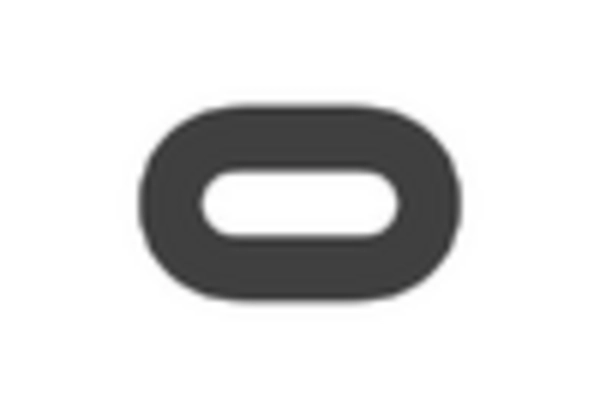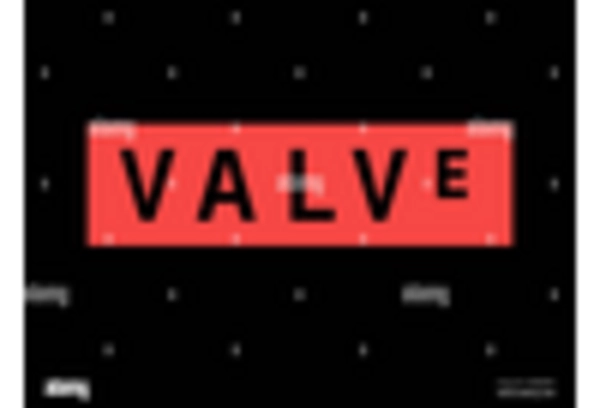Expansion of Mobile Gaming
The proliferation of mobile gaming has significantly influenced the Wearable Gaming Accessory Market, as more players engage with games on their smartphones and tablets. This trend has led to an increased demand for portable and versatile wearable accessories that enhance the mobile gaming experience. Data suggests that mobile gaming revenue is expected to reach $100 billion, indicating a robust market for accessories that cater to this segment. As mobile devices become more powerful, the need for compatible wearables that can seamlessly integrate with these platforms is likely to grow. This expansion presents opportunities for manufacturers to develop innovative products that enhance gameplay, thereby driving the overall market.
Increased Popularity of Esports
The rise of esports has profoundly impacted the Wearable Gaming Accessory Market, as competitive gaming continues to gain traction among diverse demographics. With millions of viewers and participants, esports events have become a significant platform for showcasing wearable gaming accessories. The demand for high-performance gear, including headsets and motion trackers, is on the rise, as players seek to enhance their competitive edge. Market data indicates that the esports industry is expected to surpass $1 billion in revenue, further fueling the need for specialized wearable accessories. This trend not only boosts sales but also encourages manufacturers to innovate and improve their product offerings, catering to the specific needs of competitive gamers.
Rising Consumer Demand for Immersive Experiences
Consumer preferences are shifting towards immersive gaming experiences, which is a key driver for the Wearable Gaming Accessory Market. Gamers are increasingly seeking products that provide a deeper level of engagement, such as wearables that offer real-time feedback and interactive features. This demand is reflected in the growing sales of accessories that incorporate advanced technologies, such as motion sensors and biometric tracking. Market analysis indicates that the immersive gaming segment is expected to grow significantly, with projections suggesting a CAGR of around 20% over the next five years. As manufacturers respond to this demand by developing more sophisticated and interactive wearables, the market is likely to witness substantial growth.
Growing Interest in Fitness and Gaming Integration
The intersection of fitness and gaming is becoming increasingly prominent within the Wearable Gaming Accessory Market. As consumers seek to combine physical activity with entertainment, wearable devices that track fitness metrics while providing gaming experiences are gaining popularity. This trend is reflected in the rising sales of fitness-oriented gaming accessories, which are projected to grow by approximately 25% over the next few years. The integration of health monitoring features, such as heart rate tracking and calorie counting, into gaming accessories appeals to health-conscious consumers. Consequently, this growing interest in fitness and gaming integration is likely to drive innovation and expansion within the wearable gaming accessory sector.
Technological Advancements in Wearable Gaming Accessories
The Wearable Gaming Accessory Market is experiencing a surge in technological advancements, which significantly enhances user experience. Innovations such as augmented reality (AR) and virtual reality (VR) are becoming increasingly integrated into wearable devices, allowing for immersive gaming experiences. For instance, the introduction of haptic feedback technology in wearables enables players to feel in-game actions, creating a more engaging environment. According to recent data, the market for AR and VR gaming accessories is projected to grow at a compound annual growth rate (CAGR) of over 30% in the coming years. This rapid evolution in technology not only attracts gamers but also encourages developers to create more sophisticated gaming experiences, thereby driving the demand for wearable gaming accessories.


















Leave a Comment